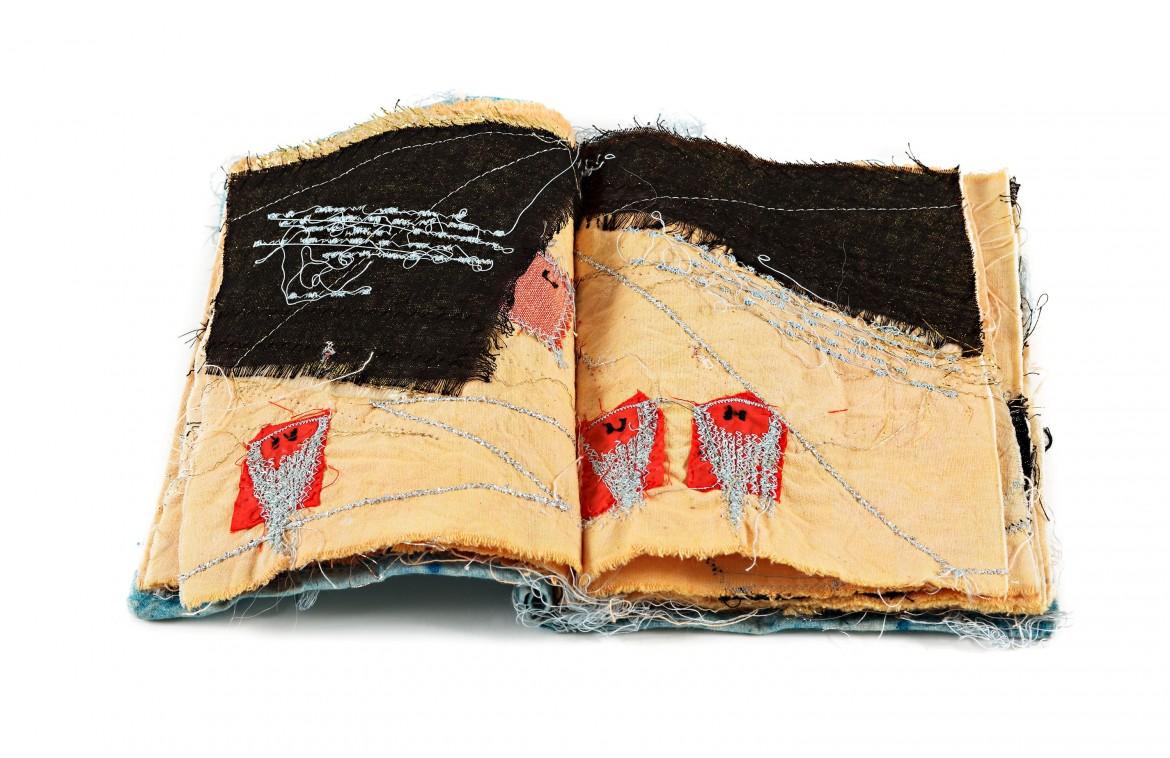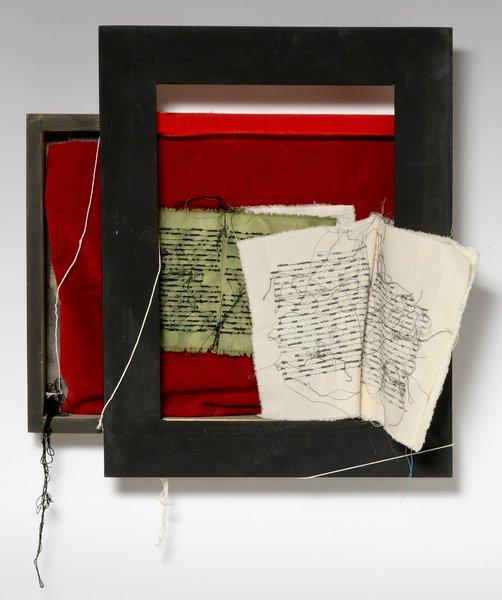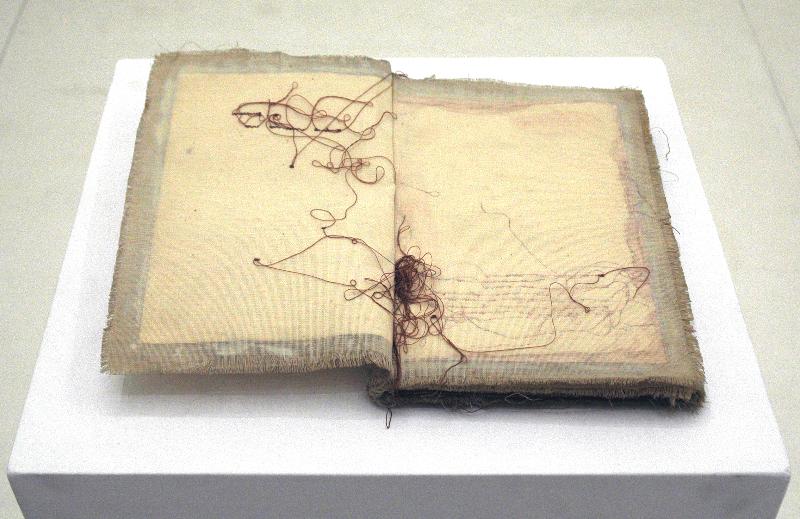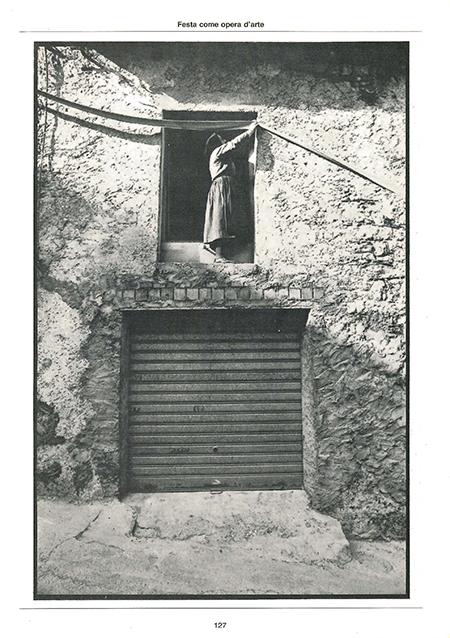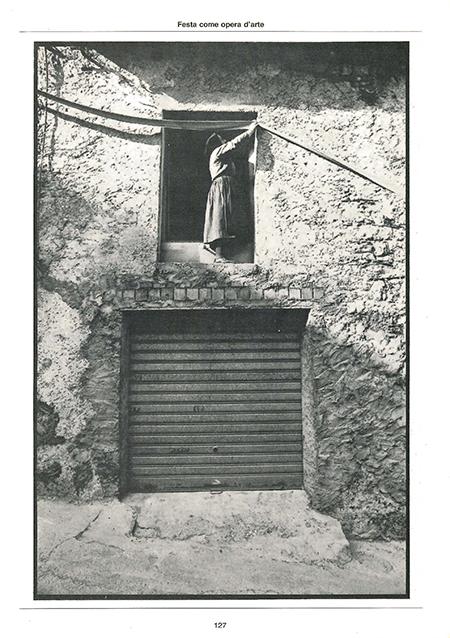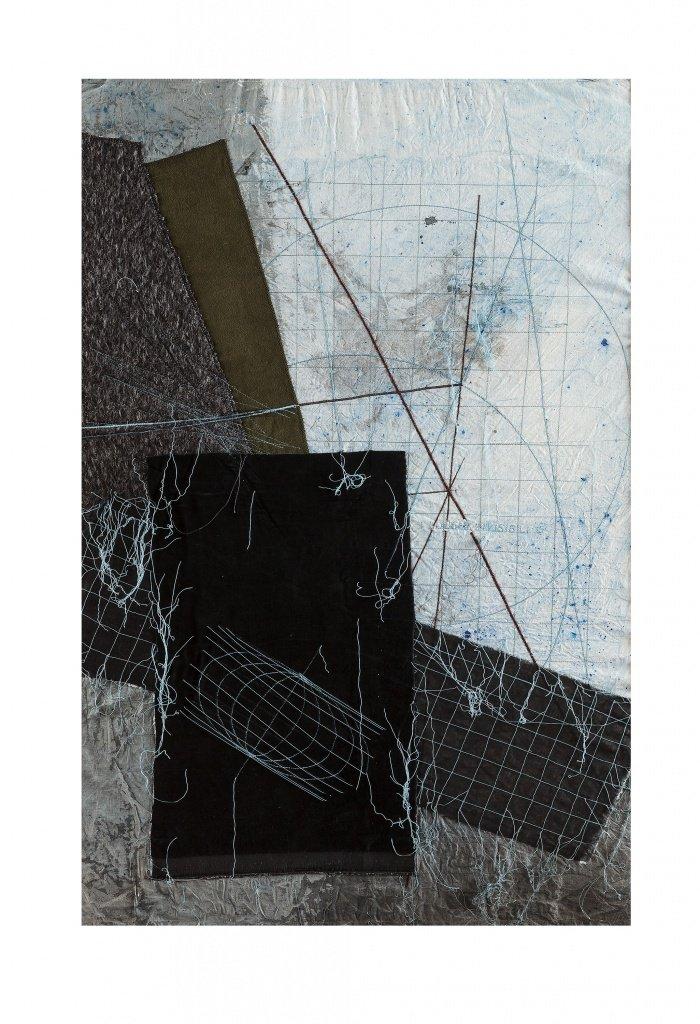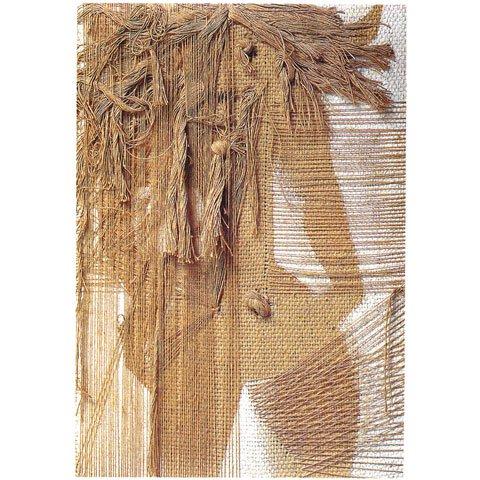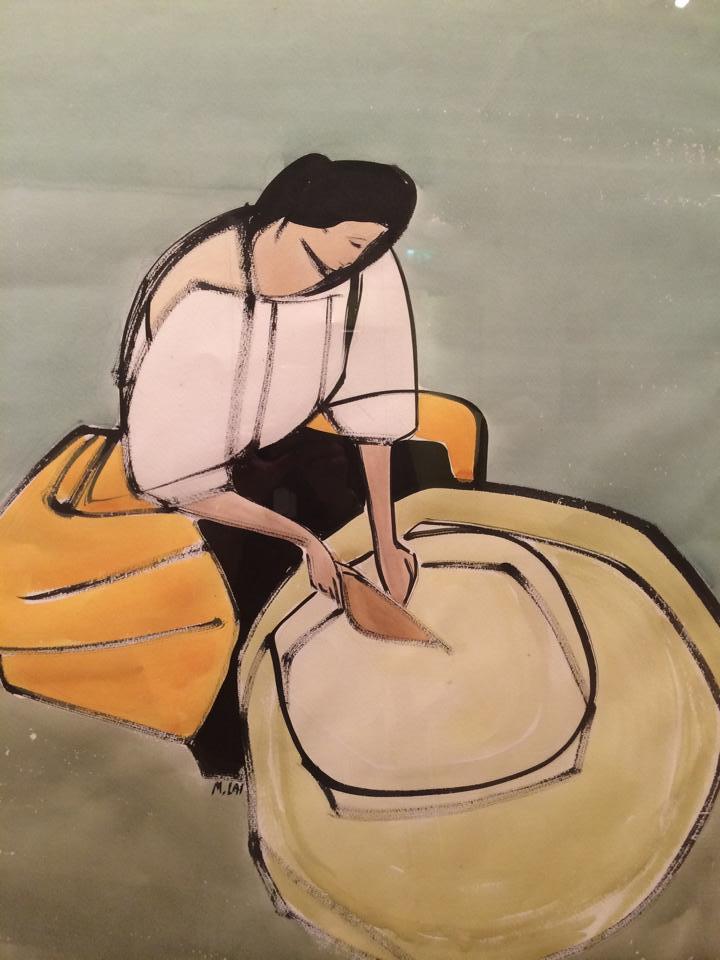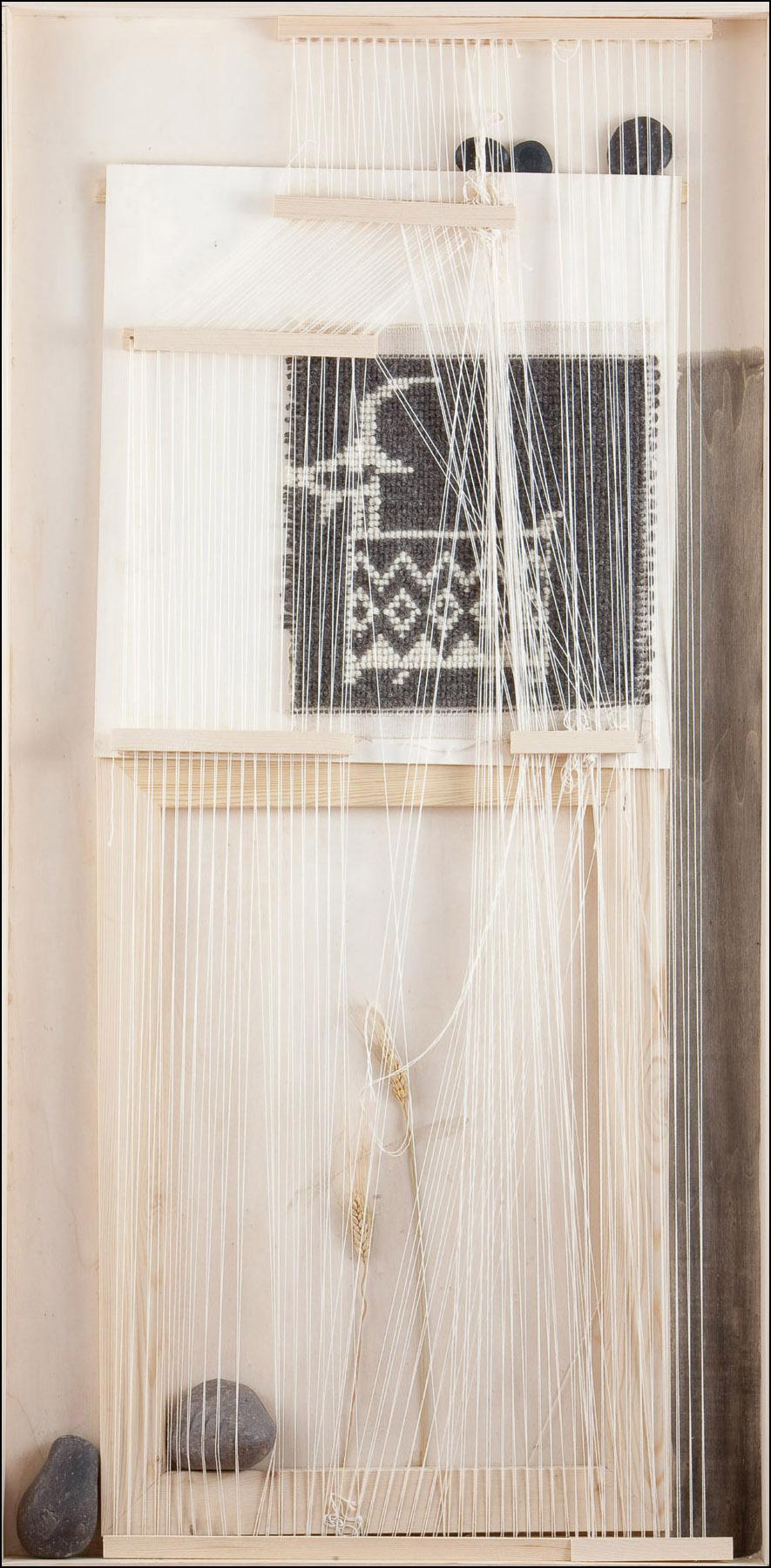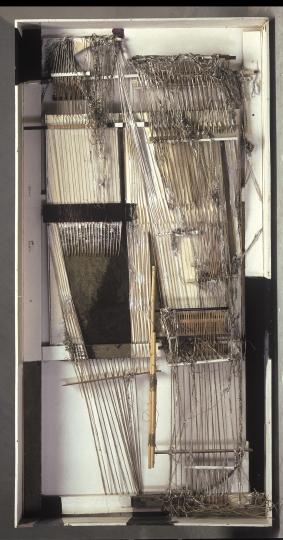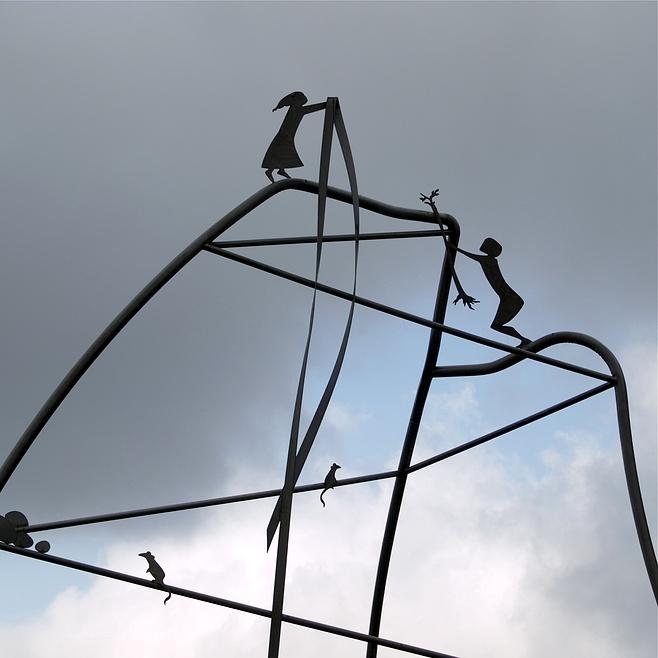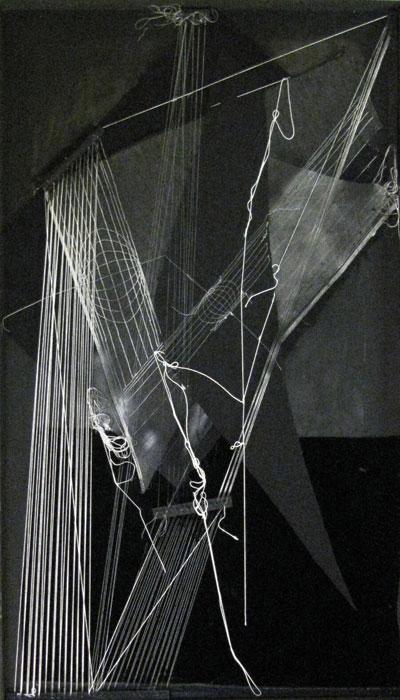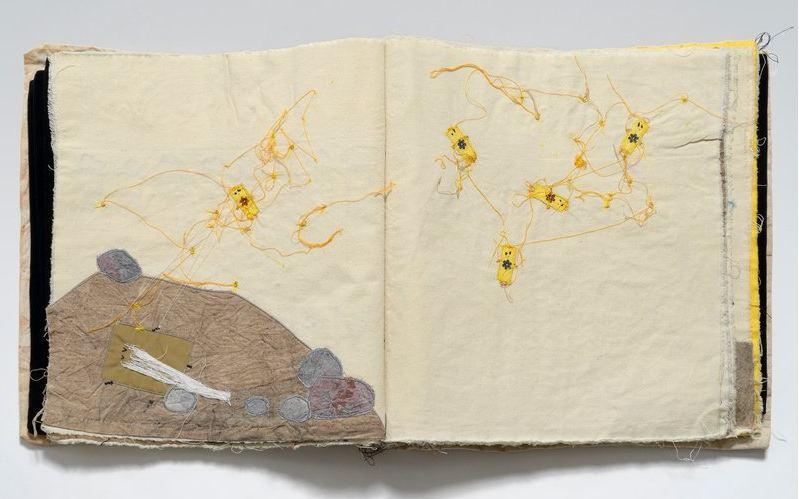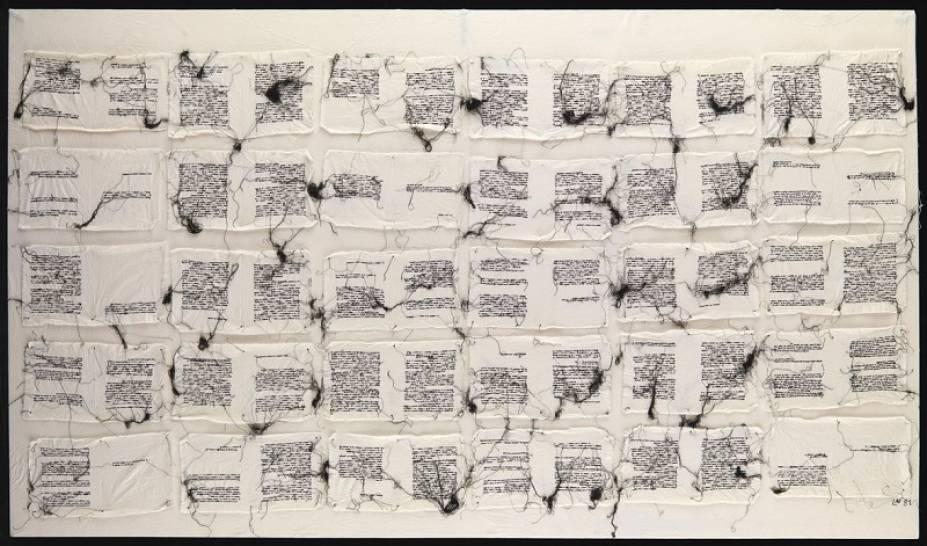In a village called Ulassai, set in the inside of Sardinia, every child is told about an ancient legend, generation by generation. It’s said that a long time ago (but probably this is a real story that happened in 1861) a house was overwhelmed by a landslip from the mountains around the village and three children died. But a little girl survived and she brought a light blue ribbon in her fingers.
In September the 8th in 1988, le life of Ulassai was embraced by a light blue ribbon once more, this time not because of a tragedy, but for being involved in an artwork.
Maria Lai, who passed away last April the 16th at the age of ninety-three, was born in Ulassai, and even if she spent so many years between Venice, Rome and Cagliari, she found in her native village a solid focus and a source of inspiration. After her studies at the Academy of Fine Arts in Venice and her teaching training in Cagliari, she discovered a very deep connection with the most ancient Sardinian traditions, during the Sixties, when she lived in Rome and her neighbor was the Sardinian writer Giuseppe Dessì.
Then, she started to focus her studies on some traditional elements of Sardinia, like the typical bread, the use of loom, stories and legends. The closest one to Maria’s personality and concept is absolutely the loom. She interpreted it as the perfect media for women’s communication and expression.
The artist herself lived the worse years for womens’ emancipation, the Thirties and the Fourties in Italy, when the society was so male chauvinist and fascist that women could never be involved in the art field even if talented. Her first frustration was the collision—meeting with Alberto Viani, her sculpture teacher in Venice’s Academy of Fine Arts who never liked the idea of women involved in artistic intentions. The loom in Maria Lai’s hands became an important instrument for women’s expression, that used ribbons, fabric and tapes to build their stories and to tell while telling. The loom became the main character of her artistic production and she started to build her own handmade carpets and embroideries, until the collection of “Telai," when this pieces of fabric became real sculptures.
Ribbons and fabric become the main characters of a great installation that invaded Ulassai in September the 8th in 1988. Maria Lai was called to design a War Memorial, but she refused and she proposed another kind of artistic project that brought the village institutions into chaos. She wanted to build a monument not for dead people but for the alive ones and she created another interpretation of the old legend of the village. So, she physically tied houses and people with a light blue tape, which was twenty-seven kilometers long. This idea was considered crazy at the beginning, because in every small community there are love connections, but also difficulties and matters between people, but this problem found a great solution too.
The people were involved in cutting a very big piece of fabric until obtaining many long tapes, and then they had to embrace and run them all around the village, all around houses and the mountains, putting a knot where there was affection between neighbors, and just turning around the corner where there was any conflicts. In some points, where there was a big matter of love and affection they use to put a piece of the typical bread in the village, called “Pani pintau.”
In this way the village could express itself because of a gesture of its own people. In that occasion women, children, old and young people worked together to celebrate their own village and to express its vitality, and then becoming a whole one with those rocks that so many times brought death and disaster in, but that are also part of it.
For so many years this performance was not appreciated by the national critics, and Maria Lai was accused of just inventing a celebration for the village. But in the last years this new concept of contemporary land art has been enhanced, and Legarsi alla montagna has been interpreted as an experiment of artistic performance where the user is also the author of the artwork itself. So now it is considered a very original step ahead on contemporary art.
Actually this performance in Ulassai meant also a big change in the village’s life, that became a open museum under the sky, and in 2006 Maria Lai decided to build a contemporary art centre called Stazione dell’arte—Ulassai, that looks after many of the artist’s artworks.
On April the 13th one of the biggest Italian artists passed away and with her also the most sensitive one in Sardinian artistic field. She has been a deep medium between Sardinian ancient tradition and the most open-minded international art concept. But in Sardinia she will be remembered most as that little woman who could pick up the beauty of this island turning it in immortal poetry.
The first anecdote directly concerns her signature style. In 1981 the mayor of Ulassai, the birthplace of Maria Lai, asked her to create a war memorial to commemorate the fallen soldiers. She refused, saying she would rather make a monument to the living. This gave her an idea for a collective performance art project, inspired by a legend from her village, called “Tied to the Mountain,” in which the houses of the small town were bound together with a strip of jean fabric representing the relationships of love or hostility between the villagers. If the relationship was good, loaves of bread were hanging from the strip, if instead it was resentful there was nothing but the fabric. Finally, the fabric strip was tied to the mountain overlooking the village, underlining the very tight connection between man and nature.
The second anecdote that I really liked came from the voice and the memory of Antonio Marras, who told it with clarity and sincere love. Maria had moved in with Antonio because they were working on a project together. He was in his studio in the basement, while she was upstairs. At dinner time, Antonio went to tell Maria to join him at the table and he found her dancing with her children, as uninhibited as a young girl despite her old age. That was Maria, says Antonio, a playful woman, always enthusiastic about life, with a lot of energy which allowed her to live a long and full existence.
“We exist in as much as the others interpret us.”
"Breads, in the shape of a lace, decorated the tape between the houses. To bake sweet bread in the shape of precious embroideries, is a Sardinian tradition for holidays that is related to women: “creativity reveals itself in the women’s everyday life.”
"Doesn't matter if you don't understand, follow the rhythm."
”I'm happy if I am able to give you, at this moment of global insecurity, the feeling of holding the sun in your hand, tenendo per mano il sole and to feel the longing for the skies, since it is the sun and the skies that give us first knowledge and then growth for happier livin."
"The mouse is me, the mountain is Ulassai, I want to be tied in a one with all who love freedom, to their thinking Gramsci (about the sculpture devoted to The Fable of the Mouse and The Mountain written in prison by Antonio Gramsci)."
“My role is to look for signs that still does not make sense, it is more like a game, but it has its risks. Playing with the wires, but my wires contain electricity, causing shock, burns, momentary illuminations."
